Caliente! Camper’s Pelotas are still the shoes for getting hot and sweaty

Almost 30 years since their inception, the (literally) ballsy trainers have become a cultural heirloom for frolicking it-kids across the Iberian Peninsula and the world at large. This new story, shot by esteemed lensman Aitor Laspiur, reminds us why.
In partnership with Camper
Words: Tom George
It’s rare for a cultural phenomenon beloved by millennials to also garner the desire and adoration of Gen Z. Surviving the test of the next generation forsaking the trends of yore is quite the conundrum. In 1995, however, an icon was born in the Iberian Peninsula that would not only take over the globe but would become a timeless go-to for decades. No, we’re not talking about the Macarena.
That year, in the aftermath of a cultural rebirth within the Balearic Coast and Spain more widely, Mallorcan label Camper crafted the Pelotas Ariel: a trainer recognisable for its sleek but rustic vegetable-tanned leather upper, which is 360-stitched to an outsole featuring 87 balls on its base. Having now sold over 11 million in its nearly 30 year history, the Pelotas has proven its place within the classic trainer hall of fame. “I’m from Finland, so the first time I saw a pair of Pelotas was in that iconic post-divorce photo of Nicole Kidman,” says creative director Achilles Ion Gabriel. “When I saw a pair in real life, they reminded me of the kind of shoes you wear when you go bowling, but cooler.”
A new offering from Camper celebrates this perennial legacy, featuring a revamp of one of the earliest incarnations of the trainer. Here, the hand-brushed finish is given to a boxing boot style. That buoyancy of two opponents sparring in the ring is reflected in the youthful and heady energy of the photography by noted Spanish docu and editorial photographer Aitor Laspiur. Teens in 90s revival garms – jorts, sporty fleeces and muted hues – dance, laugh, dive on each other, run through sun-soaked rain, lounge together, and suck on ice pops under the Spanish sun without a care in the world, meanwhile their elders do the daily chores in the background. Naturally, the older folk look no less peppy in their Pelotas. “In Mallorca, where I’m partly based, I see people wearing the original Pelotas from the 90s,” affirms Achilles. “Then, I’ll see teenagers wearing the newer styles. Everyone wears them. Everyone loves great quality and great shoes, at the end of the day.”
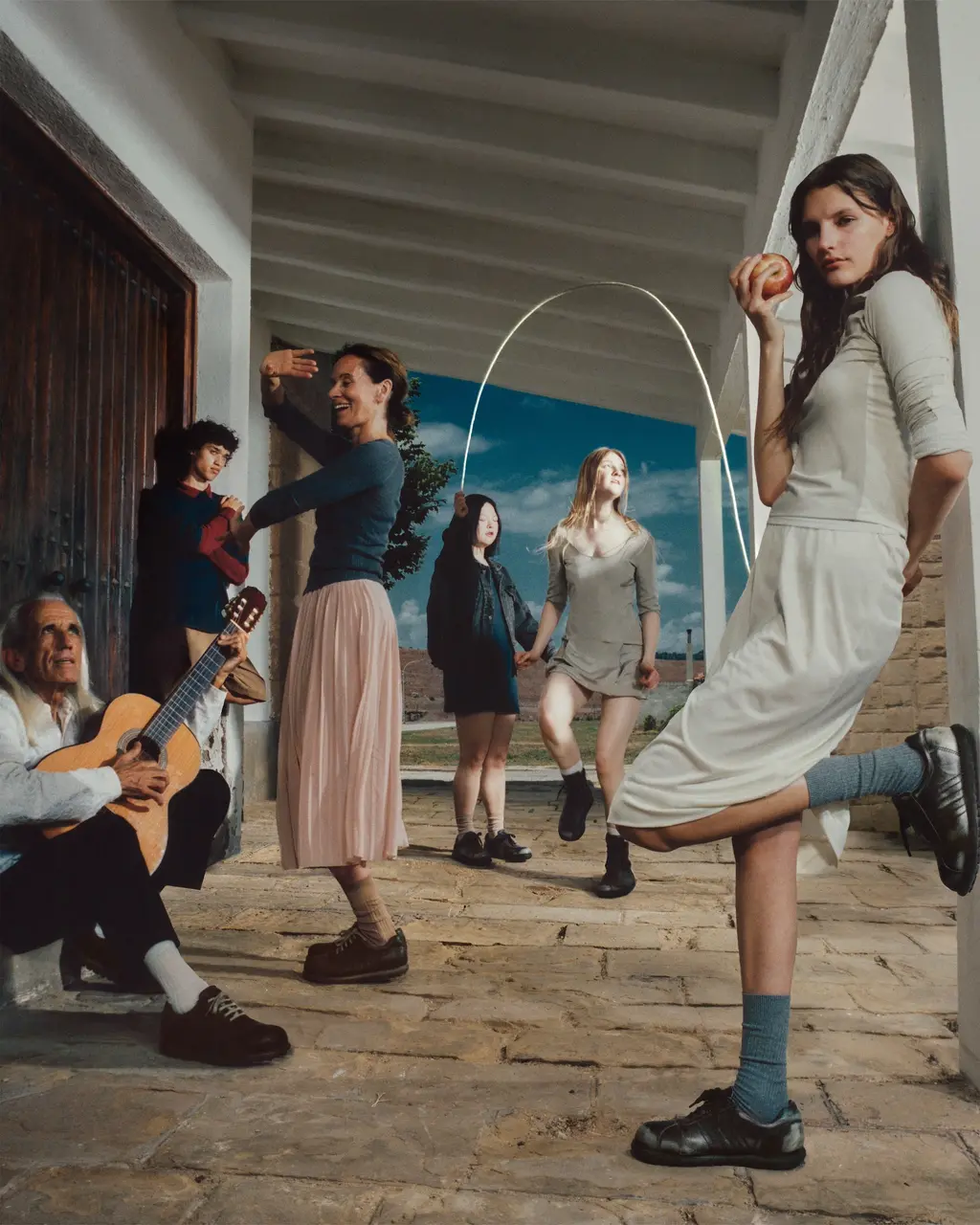
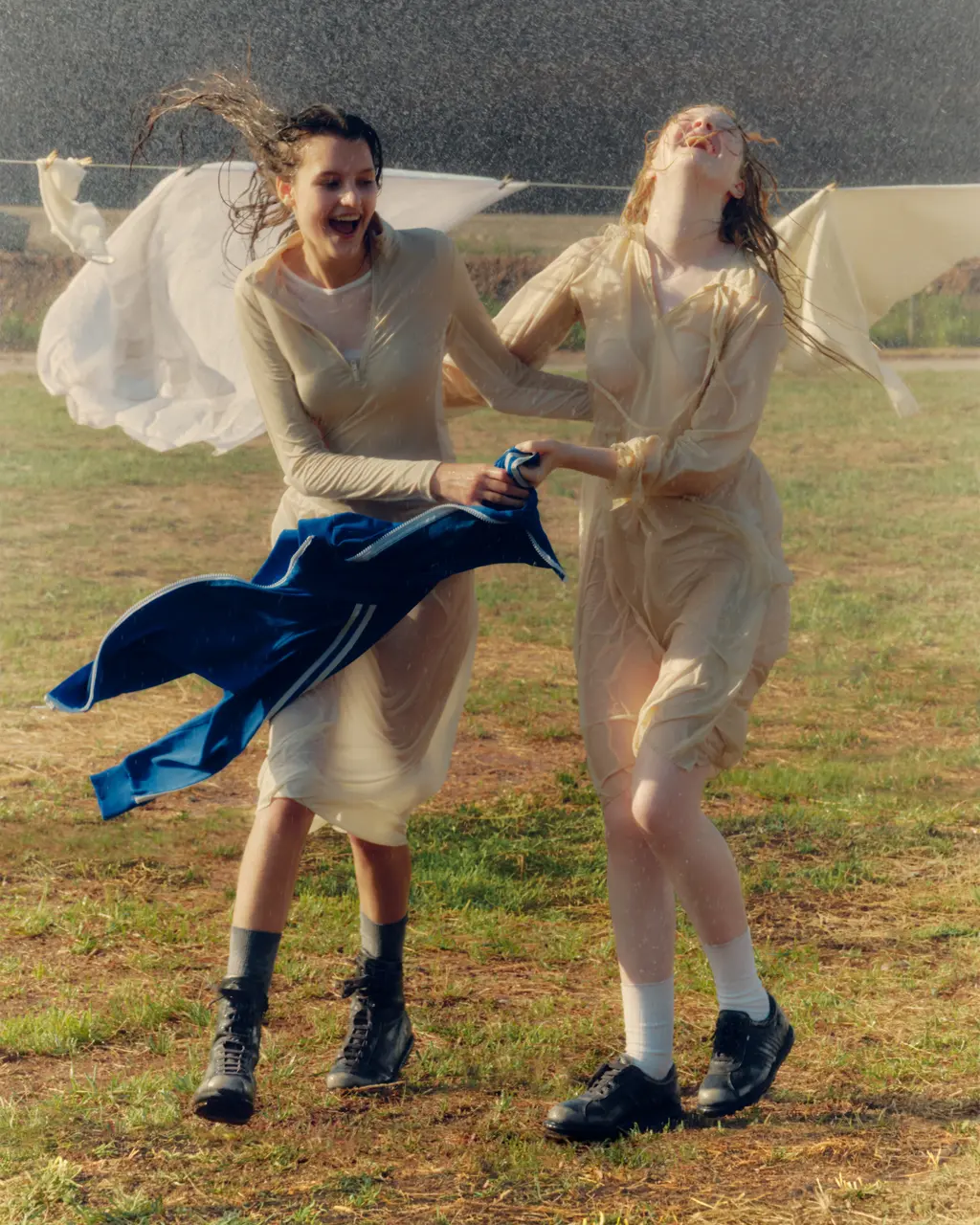
The dreamy shoot, photographed just outside Barcelona, speaks well to the ambition, passion and strength of Pelotas and Camper as cultural entities in and of themselves. After all, the Mallorcan brand only came to be in 1975 because Camper founder Lorenzo Fluxa’s grandad, Antonio Fluxa, had travelled to England in 1877, bringing back the very first sewing machine to the Spanish Island, along with new techniques he adapted, which were passed down the family line. In fact, Camper believes so much in its Fluxa craftsmanship that the Pelotas comes with a lifetime guarantee, meaning you can get hot and sweaty in the Spanish sun – or English lack thereof – for all your days.
Back to the story… 20 years after establishing his brand on the island, Lorenzo created The Pelotas against the backdrop of Spain’s newfound prestige within the sporting world after the 1992 Barcelona Olympics, an event which is said to not only be one of the best Olympics in history but transformed the city and led to major investment and global eyes on Spanish culture. In fashion terms, a moment.
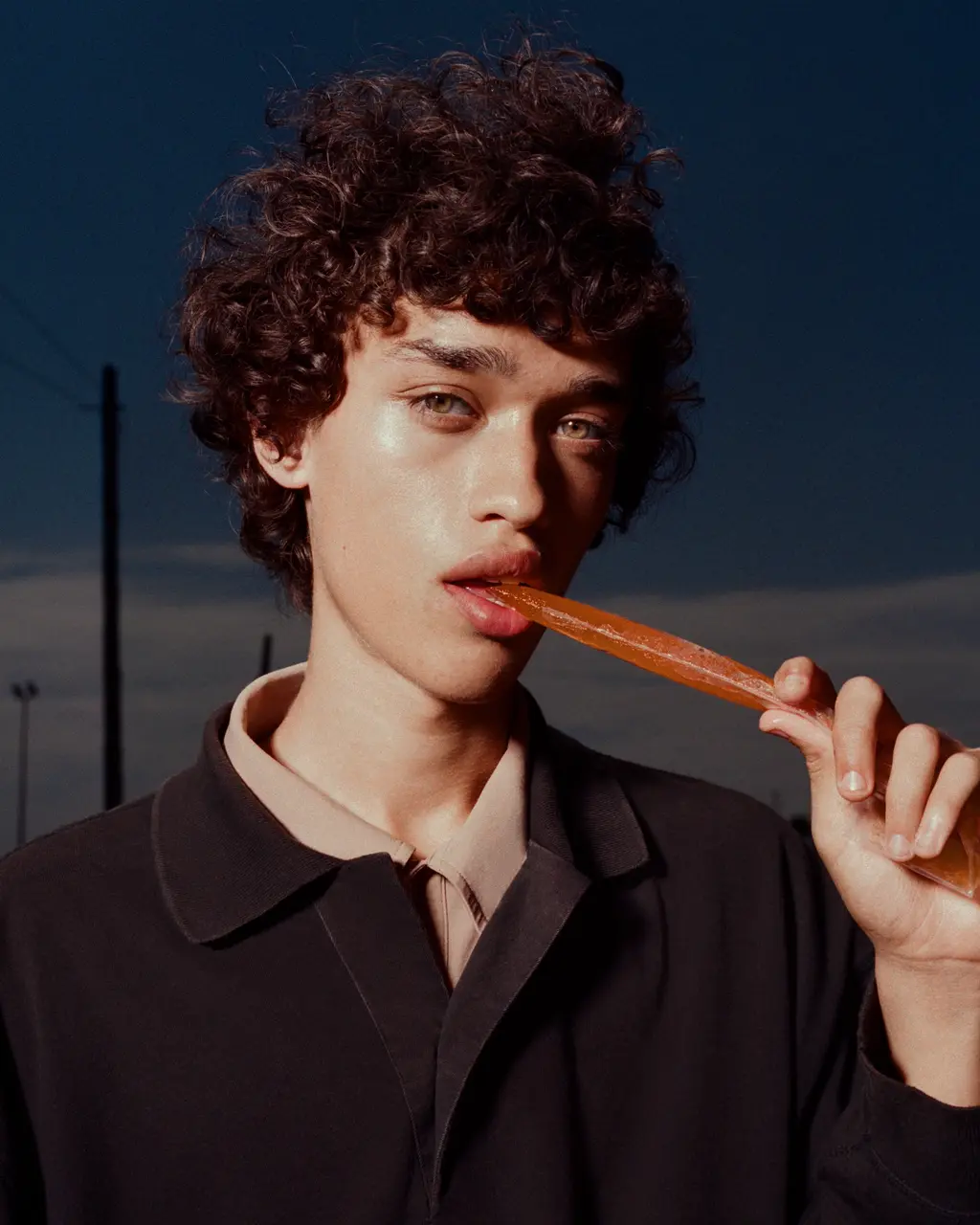
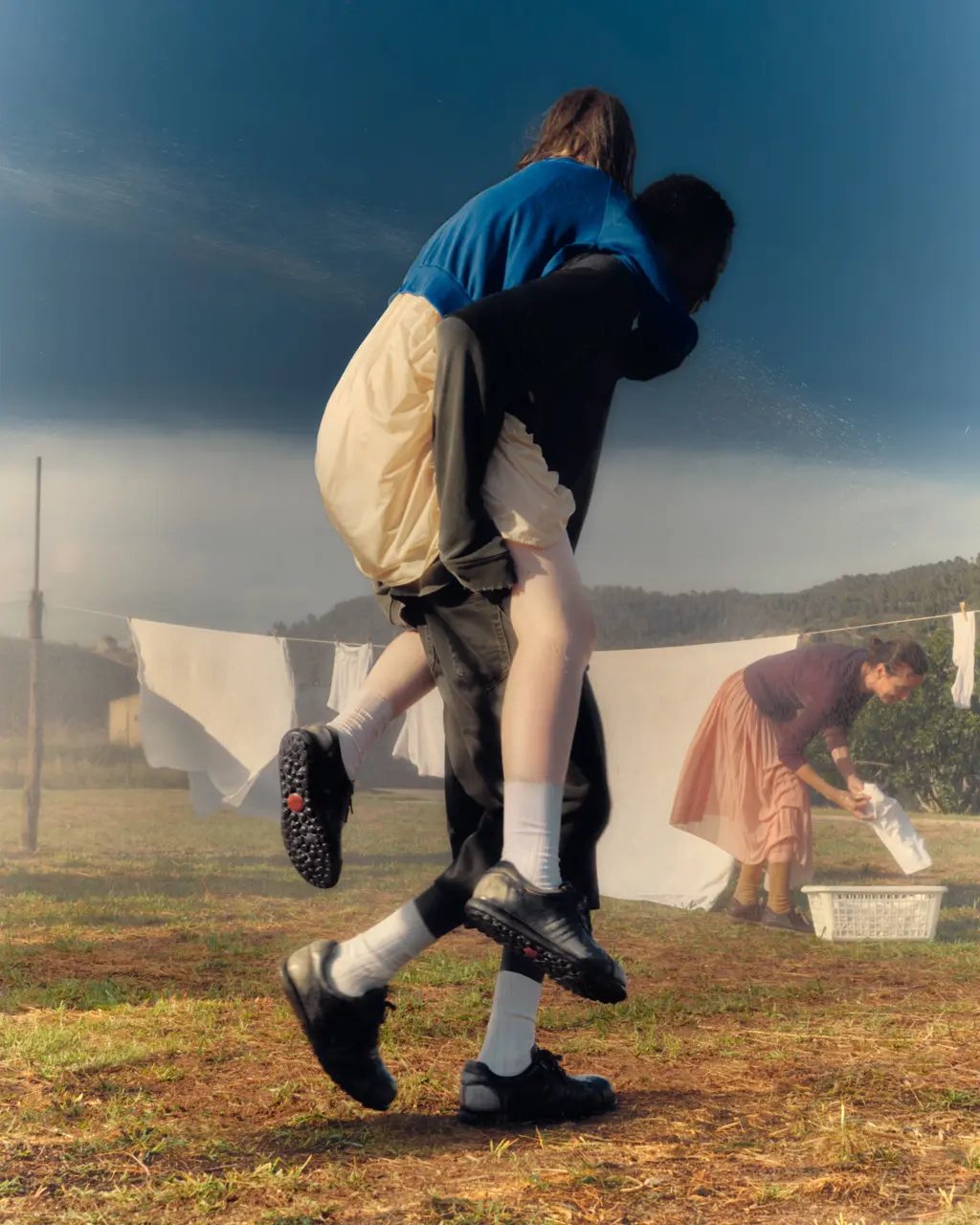
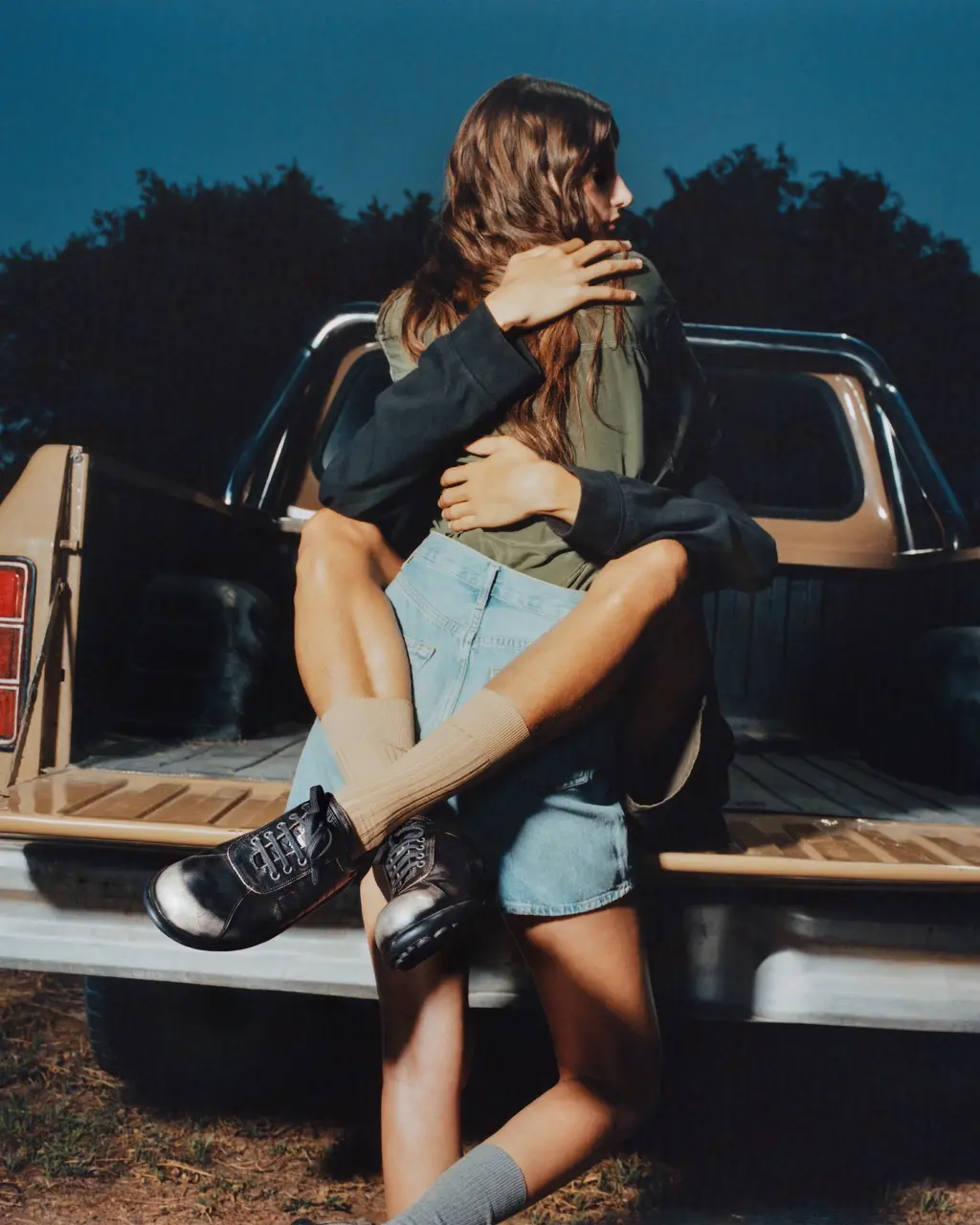
The zeitgeisty Pelotas played into this by being both inspired and named after the object that the vast majority of sports stars spend long, sweaty hours of their days playing with: their balls – make of that what you will. The first Pelotas was evocative of American football pigskins with their aged tan uppers threaded with white laces. Later editions saw suedes and high-tops, as well as subtle reflections of the equipment of other sports such as basketball, cricket and tennis. What has always remained, though, is the unique 87 spherical bubbles dotted across the rubber base that add a natural bounce and sprightliness to every step.
Perhaps, this is why the Pelotas remains such a major trainer across generations of youth culture. “We wanted to capture that confidence of being young, out on the street, loving life, doing whatever you want,” says Achilles of the campaign. Indeed, the shoe not only presents vitality and zest in its sporty vibes, but its spirit of dynamism is written into its culture-defining craft, making the perfect template for the new gen of young, wild, sprinkler-dancing dressers. One thing is for sure: the Pelotas will always be a byword for the bohemians of Spain’s chicest barrios, London’s artsiest boroughs and free spirits worldwide.





